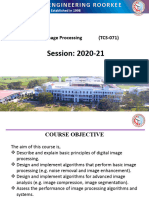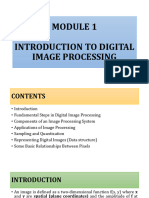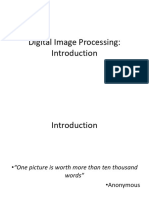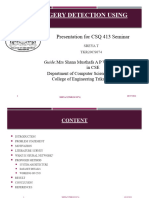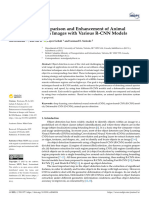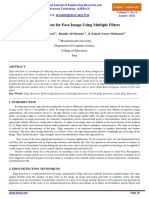0% found this document useful (0 votes)
25 views100 pagesIntroduction Fundamentals
The document outlines the course structure for ECE359 Signal Processing for Multimedia, detailing assessment weights, key topics, and evaluation methods. It covers digital image processing fundamentals, including low, mid, and high-level processes, as well as applications in various fields such as medicine and law enforcement. Additionally, it lists relevant journals, textbooks, and extra materials for further study.
Uploaded by
Fatma NewagyCopyright
© © All Rights Reserved
We take content rights seriously. If you suspect this is your content, claim it here.
Available Formats
Download as PDF, TXT or read online on Scribd
0% found this document useful (0 votes)
25 views100 pagesIntroduction Fundamentals
The document outlines the course structure for ECE359 Signal Processing for Multimedia, detailing assessment weights, key topics, and evaluation methods. It covers digital image processing fundamentals, including low, mid, and high-level processes, as well as applications in various fields such as medicine and law enforcement. Additionally, it lists relevant journals, textbooks, and extra materials for further study.
Uploaded by
Fatma NewagyCopyright
© © All Rights Reserved
We take content rights seriously. If you suspect this is your content, claim it here.
Available Formats
Download as PDF, TXT or read online on Scribd
/ 100








